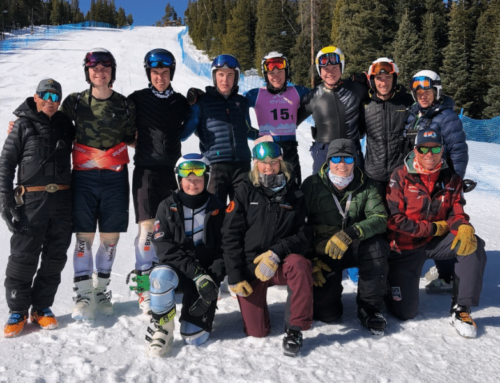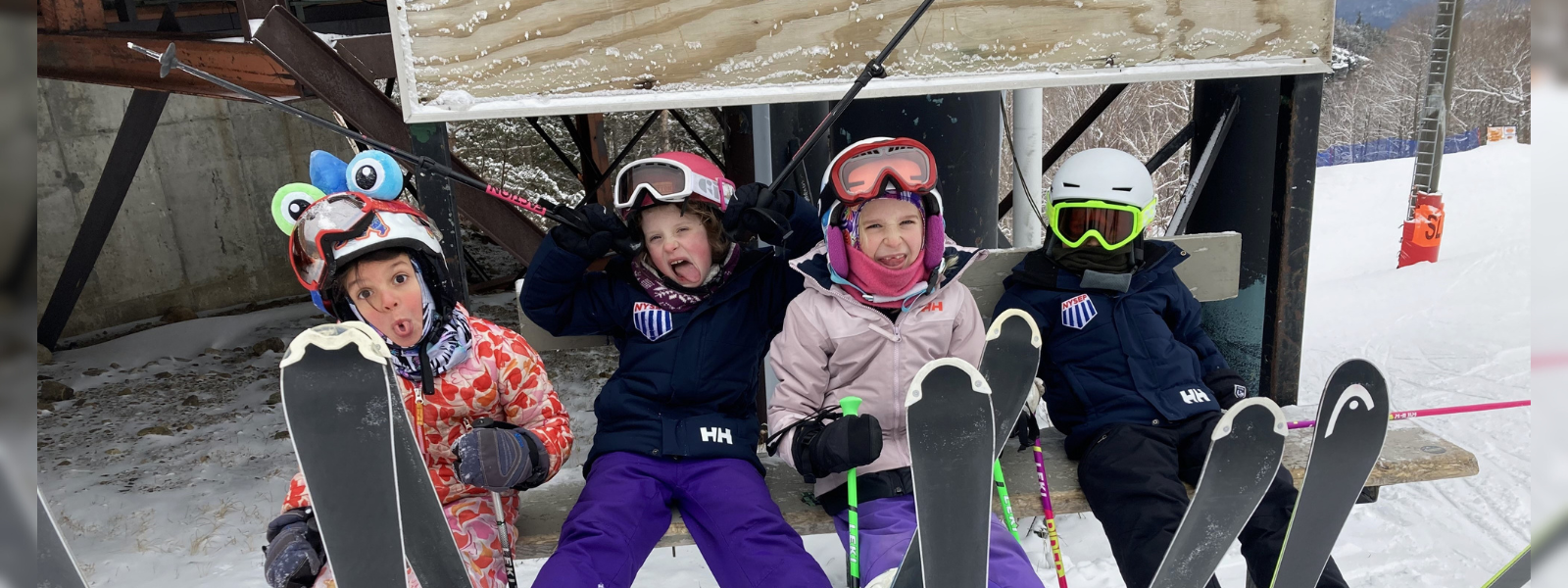Masters: Ski Faster Slalom
The secret to disco dancing is the block and roll.
In my 48-year ski racing career, I’ve had to learn slalom three times.
During my formative years in the 1970s, slalom was a bunch of yellow, red and blue bamboo poles shoved into the ground with a four-foot-long crowbar. Every gate had an inside “turning” pole and an outside pole. We skied as close to the turning poles as possible, brushing them with our shoulders — hardly a precise maneuver as we sprinted from the start to the finish, taking as straight a line as possible. By the end of the ski season, the bruises didn’t hurt anymore.
By time I joined my college ski team, in the early 1980s, we screwed hinged blue and red gates — no yellows — into the snow after our coach drilled each hole. My slalom skis were 195 centimeters long, standard for women. The men skied on 207s. The word “sidecut” was not part of the skiing vernacular, and the J-turn was in vogue. We padded up from head to toe and went even straighter at the gates, “cross-blocking” or bashing them out of the way, then loading up and cranking the bottoms of the turns. We took gates wherever they happened to whack us. By the end of the season, the new bruises didn’t hurt any more.
A few years after joining the masters circuit, in the mid-1990s, slalom technique changed again. With the advent of shaped skis, women’s slalom skis shrank to 155 cm (165 cm for men) and seemed to double in width at the tip and tail. By the first decade of the new millennium, most gates had only a turning pole, and our slalom turns looked like “C’s” on the snow. The only parts of our bodies on the outside of the poles were our feet. We “blocked” the gates with our hands or shins because they were in the way thanks to our fast line — in theory. Some masters racers adapted more quickly than others, and many are still trying to figure it out.

Dancing queen Dana Alexandrescu’s body is on the inside while her skis are on the outside of the pole. Her hand naturally blocks the gate as she skis by it without excess reaching across her body. (Jack Ballard)
If modern slalom technique remains a mystery as you get on snow this winter, resist the urge to hop into the first full-length slalom course you see. Instead, try this progression to help you improve your technique (or ask your coach to set it for you).
Goal-Post Drill: The Goal-Post Drill, also called the Frame Drill, teaches you to keep your shoulders level and facing down the course as your feet dance side to side. Hold your ski poles about half day down the shafts. Eyeball a landmark — a tree, a sign or a snowmaking gun — at the bottom of the slope, between your pole shafts. Then, make short-radius turns down the slope, keeping the object between your poles. The next run, make slalom turns down the same slope looking down the hill at your landmark but with a normal pole plant. Your torso should still face the landmark as your skis arc snappy turns.

The Goal-Post Drill trains you to keep your shoulders level and body facing down the hill while your feet move side to side, a prerequisite of fast slalom racing. Photo (Jack Ballard)
Brush Courses: Brushes teach you how to get your feet outside of the gate and your body inside of the gate without the distraction of a pole to block. On a moderate slope with an even fall line, set a short, rhythmical slalom of 12 to 15 brush gates, allowing for about 11 meters between turns. When you run the course, concentrate on keeping your torso “square” (facing down the hill) as your feet go around each brush, similar to what you felt doing the Goal-Post Drill. After you master a basic brush course — feet on the outside of the brush, shoulders level and torso inside the brush — experiment with rhythm changes and vertical combinations (flushes, hairpins and delay gates) set with brushes.

Pete Petry, Head Coach of the Silver Run Ski Club at Red Lodge Mountain and former collegiate champion, demonstrates skiing a brush course. The brushes allow him to practice the correct line, getting his feet on one side of the gate and his body on the other side of it, without risk of hooking a tip. He can also keep his body facing downhill and his shoulders level because there’s no temptation to reach for the gates. (Jack Ballard)
Stubby Courses: Blocking is a function of line. Stubbies continue the process of teaching you proper line, now with a half-gate. You don’t need to block it with your hand, so the temptation to reach across your body is not there, but you do get the sensation of the gate hinging toward the snow as you pass by it — and it’s kinda fun to nail it with your shins. Use the same progression of courses as you did with brushes.

Skiing a stubby course allows you to perfect your line, skis on the outside of the pole and body on the inside of the pole, without the distraction of blocking a gate. Photo (Jack Ballard)
Full Gates: To graduate to full-length gates, set a course that’s a mix of stubbies and full-height gates. It’s helpful to insert several stubby turns periodically down the course to allow you to “square up” now and again. Use the same progression of courses as you did with brushes, starting with short, easy and rhythmical turns and ending with a full-length slalom with various combinations and rhythm changes. The timing is important: block the gate, plant your pole, and then roll your skis into the new turn, all very quickly, of course.

After you’ve progressed from brushes to stubbies, then it’s time to ski full-length poles. (Jack Ballard)
Practice the Goal-Post drill and to set brush courses and stubby courses periodically throughout the winter, too. Before you know it, you’ll be dancing queens and kings.






















